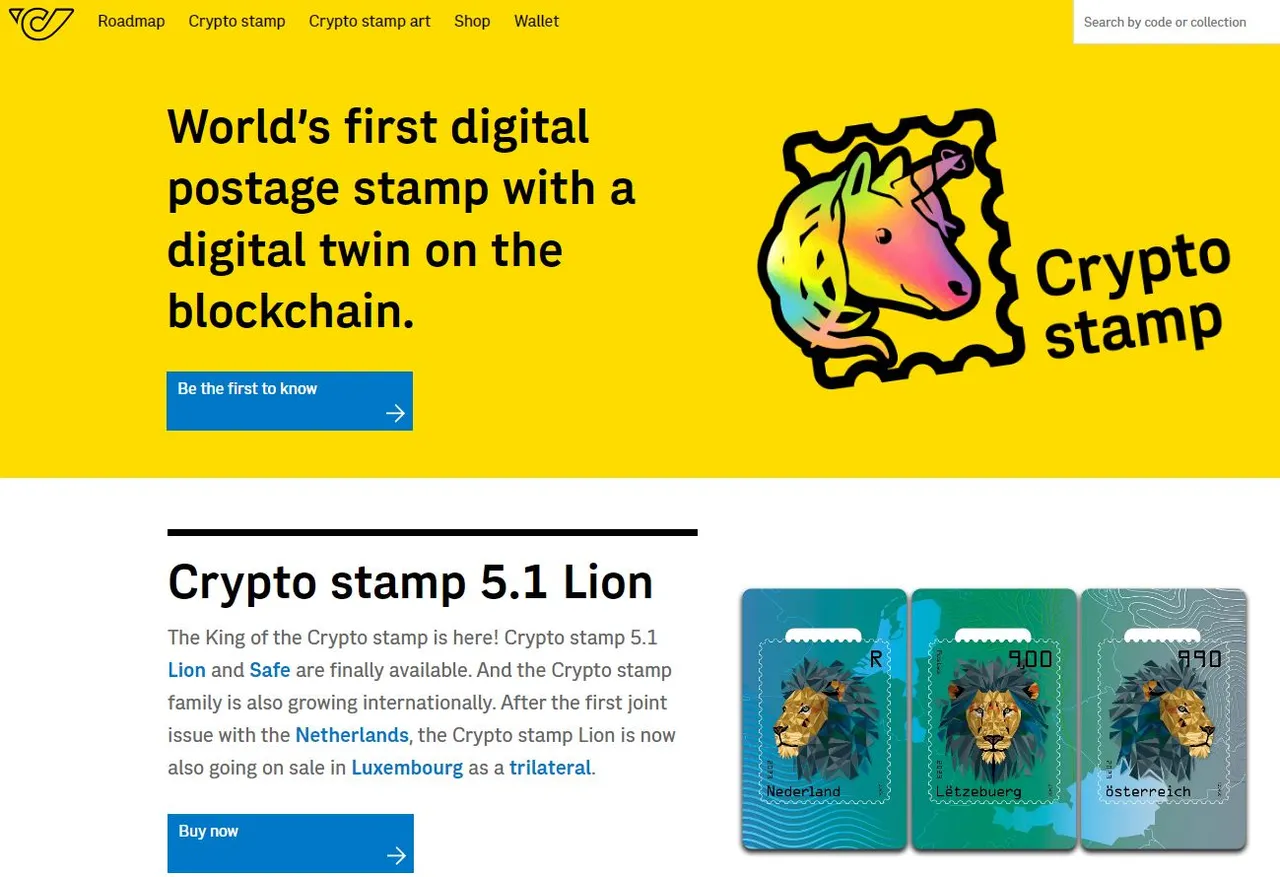"Crypto" is slowly, but surly, permeating the mainstream! Remember my presentation of the Crypto.com VISA debit card "La carte de crédit Crypto.com: découvrir la crypto de façon douce"?
Well, we took a new step recently! After being told by a friend, I've noticed that my local post office was advertising ... "cryptostamps"! A limited edition of postal stamps paired with "digital twin" NFTs on the Polygon mainnet.
Actually, as you can infer from the landing page of the cryptostamp.com website, and you can further confirm by surfing the site, this has been going on for a while already (it just wasn't very well known). The Austrian postal service has issued the first cryptostamp (a cute unicorn) already in 2019!
I only learned about this now because, after the Dutch postal service, the Luxembourg Post also got associated for the 5.1 edition of "crypto lions", a "trilateral".
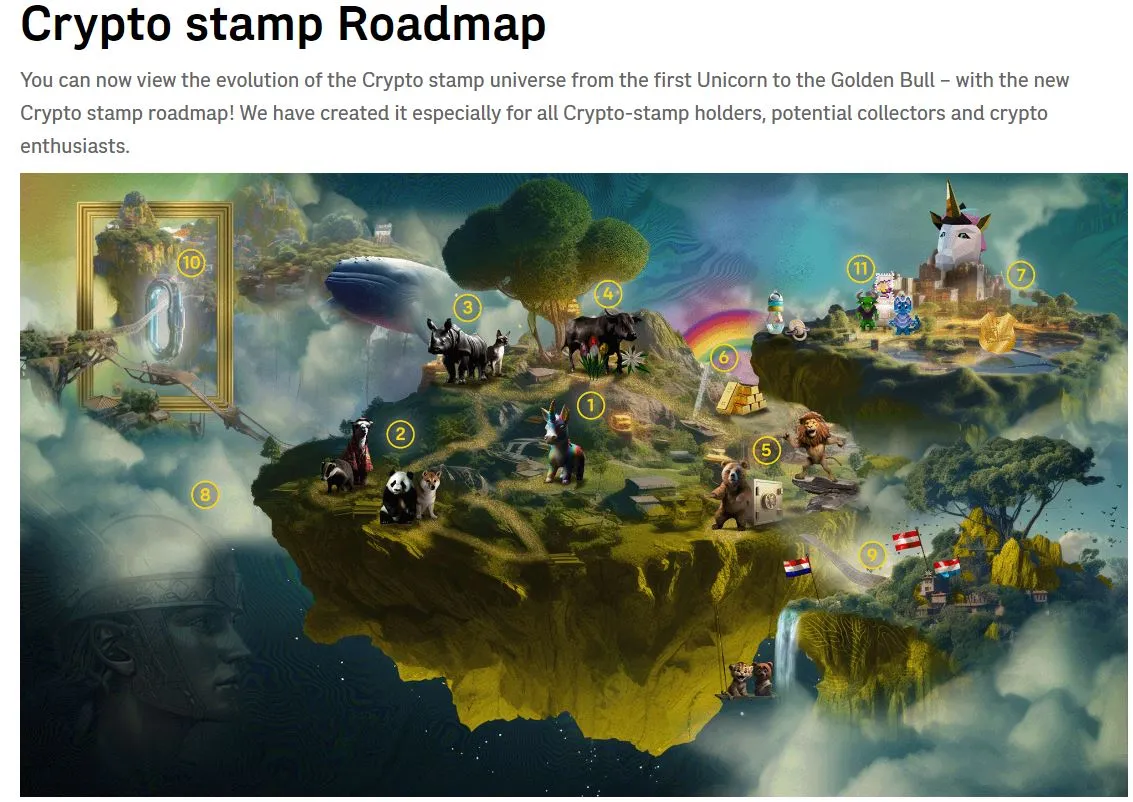
In this edition, the first to be distributed in Luxembourg, 75 000 physical stamps were created and distributed in post offices around the country. They are presented in individual sealed paper envelopes and cost a pretty steep (for a postal stamp) 9€ each.
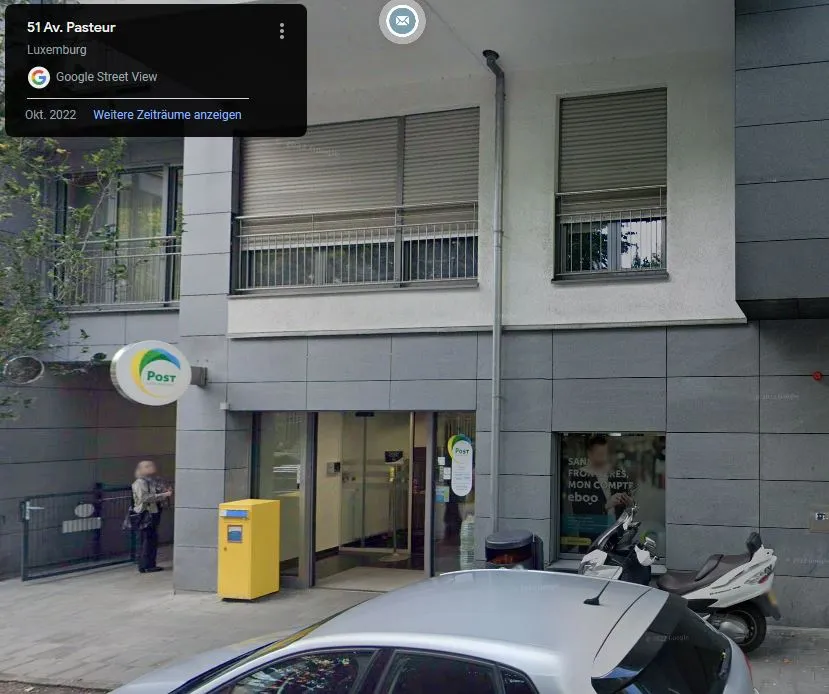
I bought my physical cryptostamps "over the counter" in this regular post office in the neighbourhood (credit: Google Street View)
As an anecdote, I've asked the (rather aging) postal clerk if he knew what he was selling, and whether they had received a training from the employer about this totally new product. He said that they had simply been informed that they were now selling this, received no training at all but that out of curiosity he had gone to read up a bit about this bizarre new thing!
An interesting aspect which adds credibility to the whole enterprise is that you can also change the order of purchase and (allegedly) buy "the pair" (paper stamp and digital twin) by starting with acquiring the NFT, by paying with crypto, via the Austrian website, and then ordering the associated paper stamps (within 5 years of the purchase of the "digital twin" NFT).

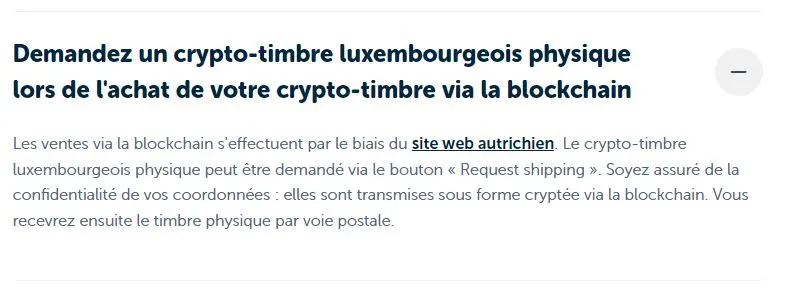
The "FAQ" of the Luxembourg Post (in French) where the possibility to buy the NFT first, paying in crypto, and then request the shipping of the physical stamps is explained
I haven't tried that yet, though, hence the "allegedly". Also, I suspect it will be a lot less convenient and will require some KYC, unlike entering a post office in person and paying your cryptostamps with cash ...
Functionality
Normal stamps cost 1€ each. One can use the "Lion" paper stamp to mail a "M" (medium) size "registered letter" (4€ for the letter and 5€ for having it registered). Of course, that's mostly an alibi: if one needs to post a M-size registered letter, one has to bring it to the postal office (in order to register it), where the clerk will take care of the postage and simply charge the 9€, without sticking an actual stamp on the letter. That implies that whatever stamps are going to be sold, the overwhelming majority will be bought by people having an interest in the NFT, not by people who actually look to mail an M-size registered letter...

I bought 10 cryptostamps myself for the NFTs, because as normal stamps they are rather pointless. You can see them pictured below, unopened envelopes and a physical cryptostamp on a cardboard support, compared against regular "local mail" stamps for mailing letters weighing up to 50g in Luxembourg ("Lëtzebuerg" in the luxembourgish language).
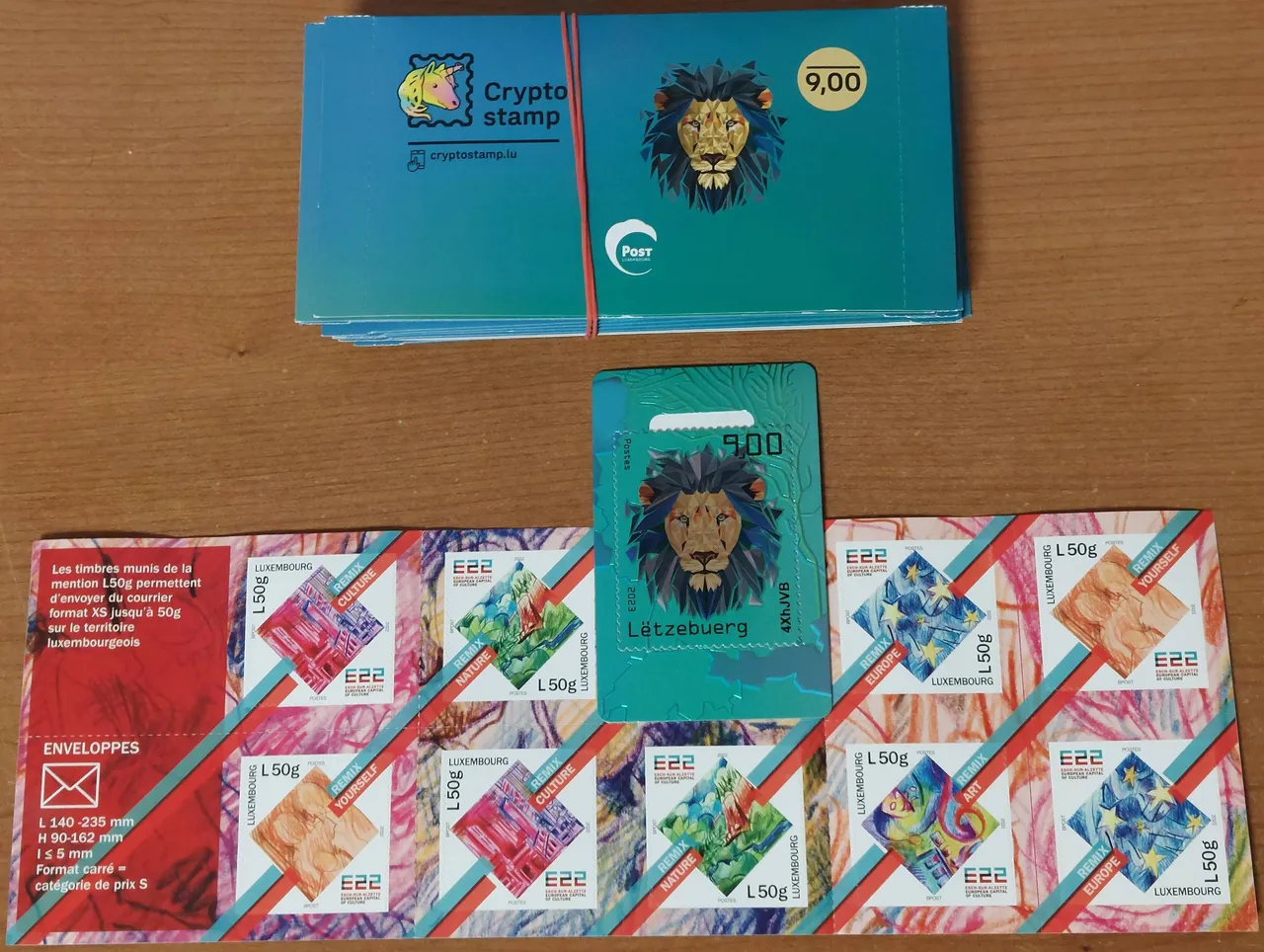
Digital twin
The physical stamp has an (alleged) "digital twin". The stamps's cardboard support includes an NFC chip one can read with the phone. The NFC chip can be read through the envolope, before opening it (and being able to find out the rarity of the associated lion NFT). This also ensures that the envelope hasn't been tampered with and you'll really find a cryptostamp inside rather than an empty envelope.
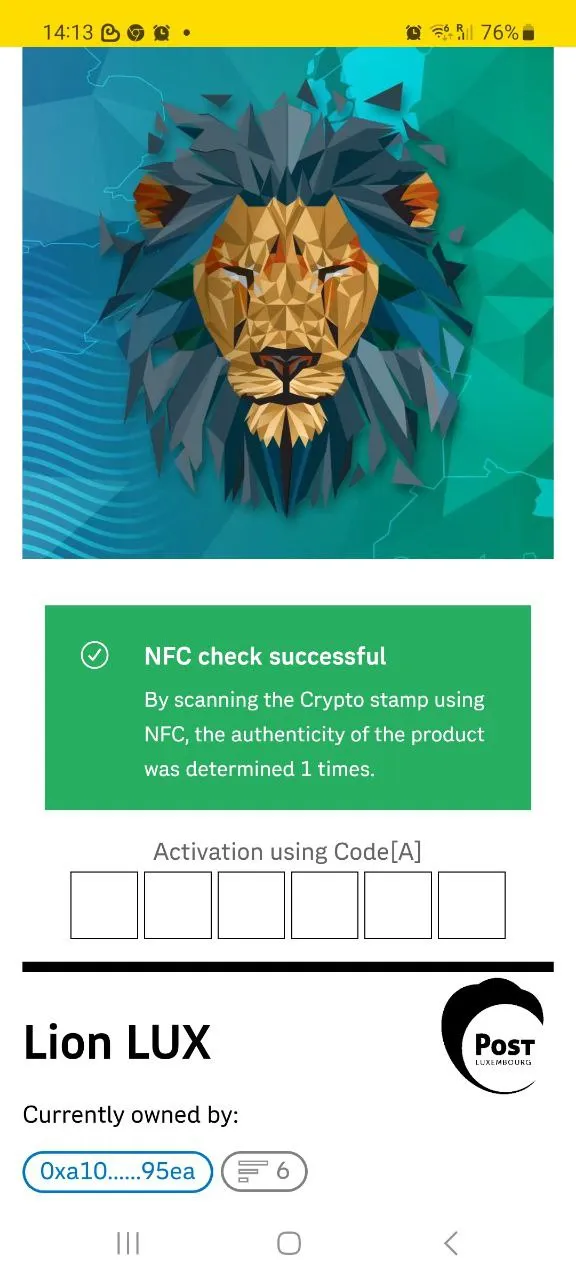
In order to "activate" the NFT you need to enter a six symbols code that is found on the actual stamp (on its cardboard support, to be more specific), for which you need to unseal the envelope. Note the public address where the digital twin is stored. If you enter it in polygonscan you find the following information: this address contains one NFT, the LU cryptostamp number 54677. As a matter of fact, each crypto-lion NFT is stored separately, at its own dedicated address. But its rarity doesn't appear associated with it yet (it's centralized, controlled by the minting smart contract).

I opened two, with (proprietary) codes 4XhJVB - 2IADTT (the second being the activation code, on the back) and 3CbwqE - W4ZTHP. As you can see, the paper stamps are both the same color, although I have found out later that their associated NFTs were of different colors (so much for "twins")

Here's what the back looks like. Note the two codes in clear text in the upper-left and upper-right corners: 3CbwqE and W4ZTHP. The address of the webpage is constructed as https://cryptostamp.com/LUCS/3CbwqE#W4ZTHP
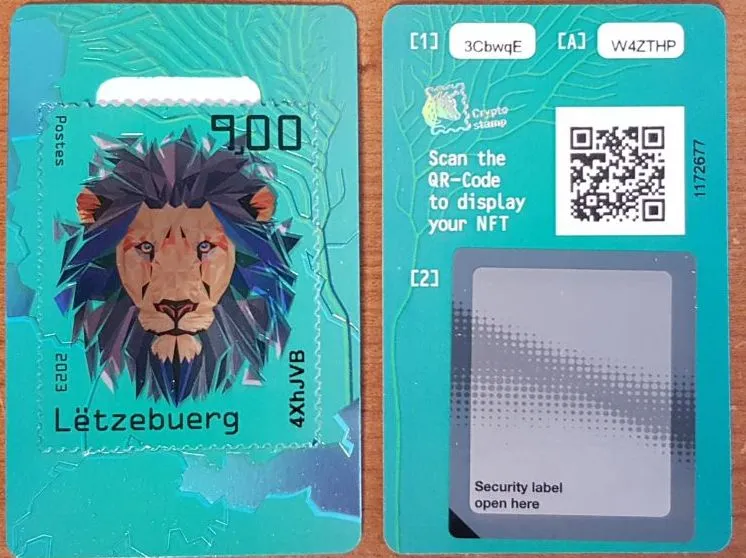
Diversity
Although each cryptostamp envelope costs the same, and contains an identical paper stamp, the associated NFT is ... a surprise! There are "digital twin" lions of five colours, in different proportions:
- almost 40 000 grey lions ("common")
- 20 000 green lions ("uncommon")
- 10 000 blue lions ("rare")
- 5000 yellow lions ("epic")
- 750 red lions ("legendary")

When reading again the NFC after "activation", the browser loads a web page where the associated image is displayed. If you don't have an NFC-chip reader, there's also a QR-code that takes you to the same page where the "digital twin" of the paper stamp is displayed. You can see below the first one, an "uncommon" (green) one.
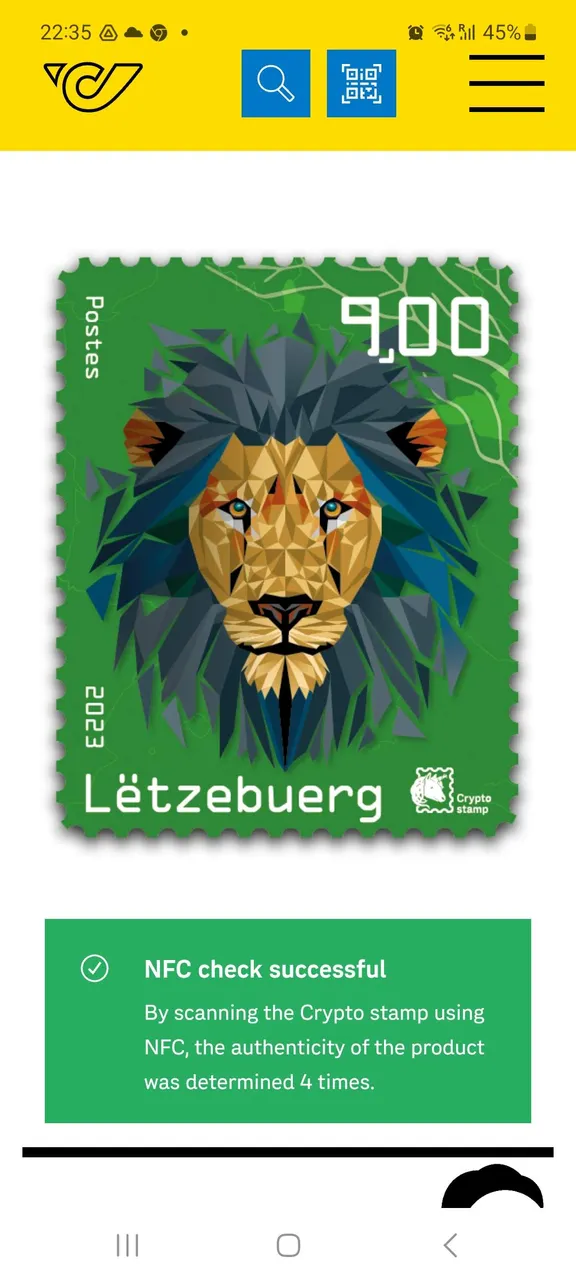
Under an opaque, metallized film, lies the private key giving ownership of the NFT, stored as both a QR code and a 12 word seed phrase. This is what is conferring the buyer of the paper stamp ownership over the "digital twin".

Of course I wanted to exercise my right of ownership by transferring the NFT from its initial address to one of my addresses. I have to say, I wasn't very happy with MetaMask in this process. First, using a seed phrase is a bit of a pain with MetaMask (you have to use a new browser of erase the existing instance of MetaMask and start fresh, because it only accepts ONE seed phrase at the moment. Second, even after doing that you ... don't see the NFT! Indeed, for whatever reason MetaMask thinks this NFT is a scam and hides it! I found it under "Hidden NFTs", alongside obvious scams
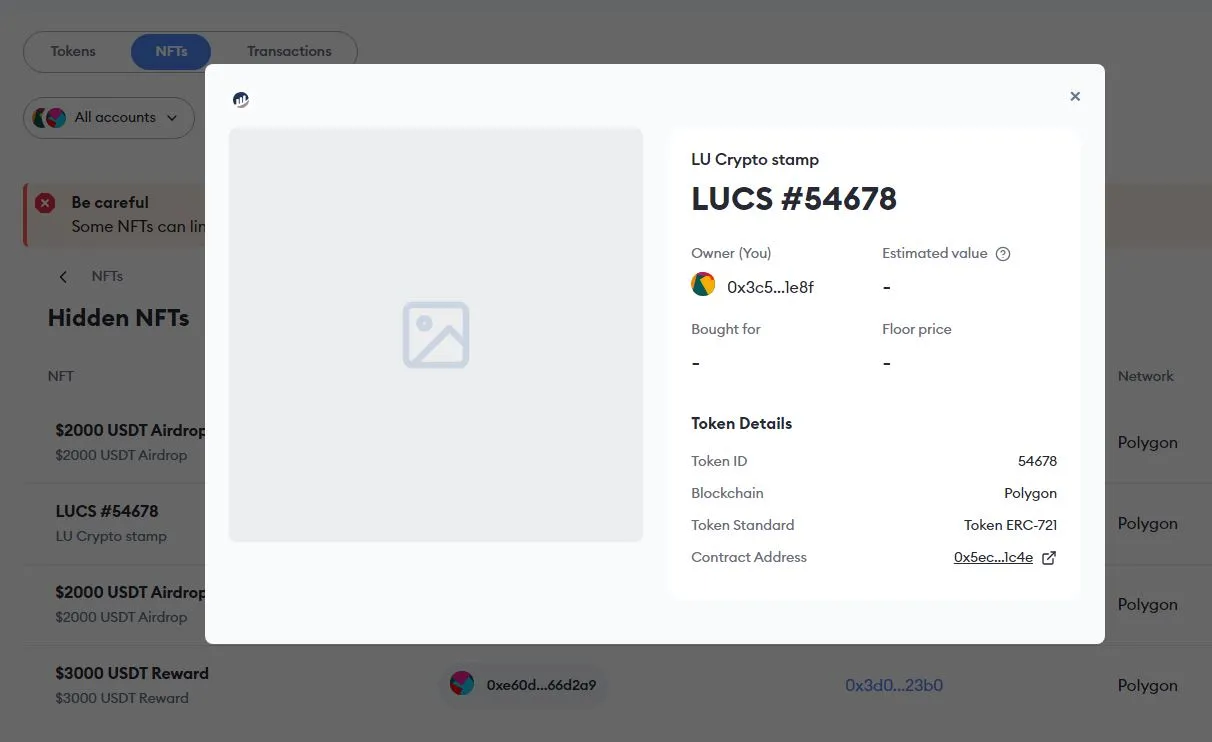
MetaMask thinks the LUCS (Luxembourg CryptoStamp) is a scam and hides it
So I ended up using Phantom, which used to be a Solana wallet, but in the last year has added support for Ethereum and Polygon. Phantom supports multiple seed phrases.
To actually be able to move the NFT I went on Kraken and transferred some MATIC to the public address of the NFT, in order to be able to pay the transaction fees. I then used the seed phrase to get access to it through Phantom and transfer it to one of my addresses.
Neither Phantom nor polygonscan (nor MetaMask) have enough information to retrieve the image, so the NFTs appear "imageless". The associated image can only be seen by connecting your wallet to the cryptostamp.com site (centralized, controlled by the Austrian postal service). This is somewhat "eyebrows raising" I have to say ...
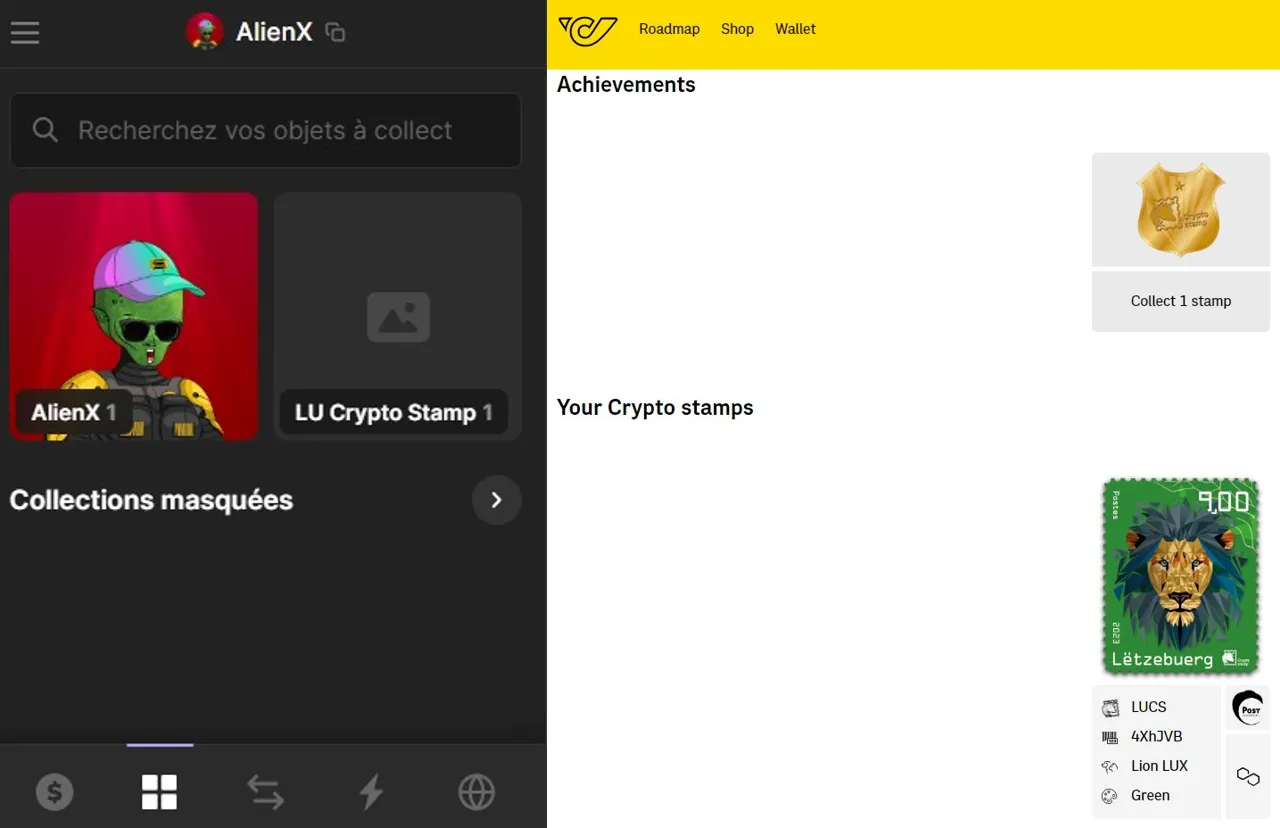
Phantom, MetaMask, polygonscan cannot retrieve the image. Only the cryptostamp.com website can show you the color (rarity) of your cryptostamp NFTs
This is how I found out that the second envelope I had opened contained the key to a "legendary", red crypto lion!

The "roude Léiw" ("red lion") is the symbol of Luxembourg. The Luxembourg footbal team, for instance, is called "the red lions"
Now for the second lion I wanted to try something different and do it "by the book. So I went on the cryptostamp.com website and connected my Phantom wallet to the site. I authorized the site to use my webcam, opened the "security label" on the back of the physical's stamp cardboard support and held it in front of the webcam. The site read the (previously hidden) QR-code with the private key of the cryptostamp's "digital twin" address and ... lo' and behold, automatically initiated the transaction, sending the red crypto lion to my wallet (and paying for the transaction fees)!

Click on "Transfer stamp into your wallet" (after you connected your wallet) and the Austrian Post pays the Polygon transaction fees!

Check the "Currently owned by:" part in the two pictures - they are different now
Open questions
Given that there appear to be no independent ways of verifying the announced rarities, who is to say that there are only 750 / 75 000 red lions (1%) and no more? Or that "grey" lions will not be turned into red ones by mistake or otherwise by the Austrian postal service?
Also, once I've transferred the NFT in my personal wallet, it becomes completely disconnected from the paper stamp: I can very well use the paper stamp on a letter while keeping not only the benefits of the NFT (which is in my wallet) but also of its initial address, the private key of which is on the cardboard support of the stamp, not on the stamp itself. If the private key was on the stamp, it would have perhaps allowed different behaviours.
One reflection I'm making is that maybe when the paper stamp is used, the centralized images database is updated and when connecting the wallet to the cryptostamp.com site, instead of a lion perhaps a message appears "the paper stamp has been used so this NFT has been cancelled"? Who knows ...
Conclusion
If you are interested in crypto, I think you can understand where this is heading. If you are based in one of these three countries (AT, NL, LU), go buy a few of these cryptostamps, because they surely are significant and unique in their way. The first ever cryptostamps of the Luxembourg Post! Imagine ten or twenty years from now!
If you also happen to be into arthouse cinema: this reminds me of the cult Argentine thriller "Nueve Reinas" (if you haven't seen it, check it out!)
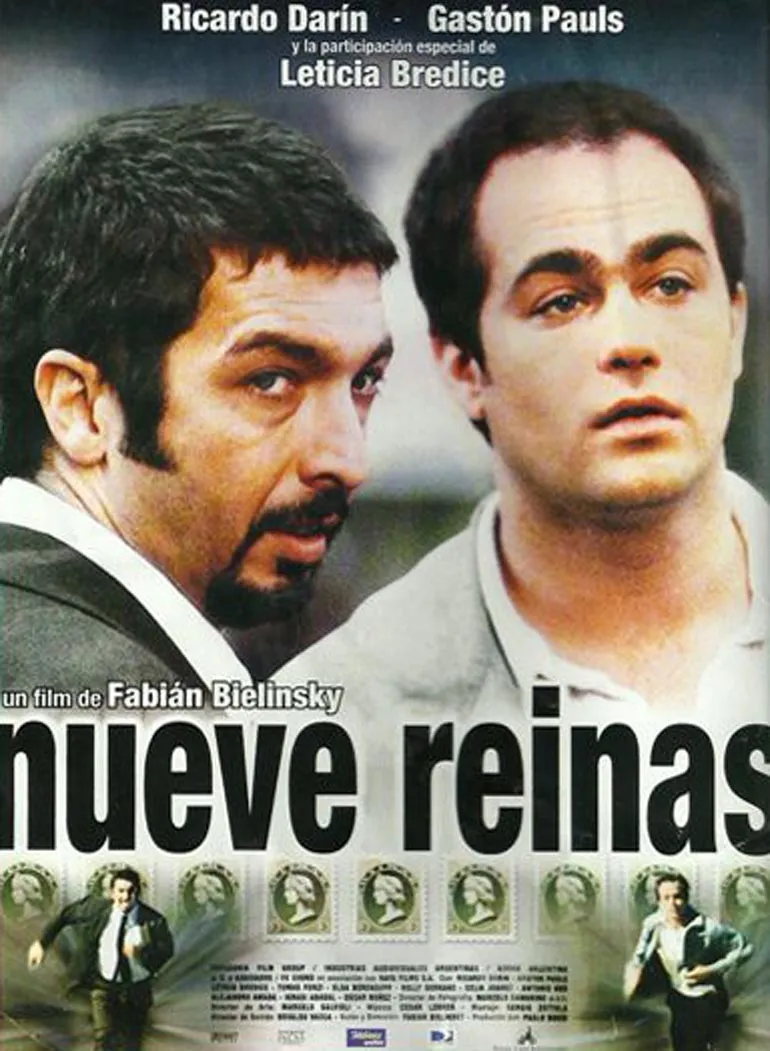
Gold is heavy, cash is bulky, as are most art pieces. Before crypto appeared, rare stamps were the easiest, most discreet way of moving large sums of money, and Argentines were well aware of their unique properties. Source

